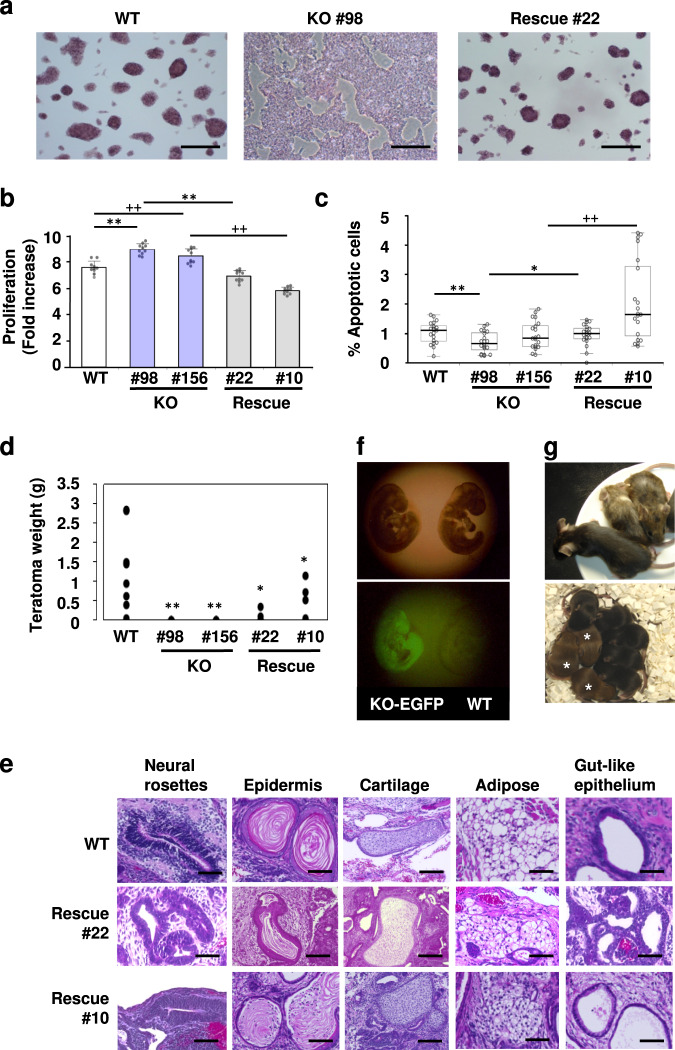Fig. 1. Effects of the presence or absence of Zfp296 expression on ESC colony morphology, growth, apoptosis, teratoma formation, and chimeric mouse formation.
a Colony morphology. Wild-type (WT), Zfp296−/− #98 (KO), and Zfp296−/−(CAG-Zfp296) #22 (Rescue) ESCs were cultured and stained for alkaline phosphatase. Scale bars, 300 μm. b Cell proliferation assay. Cell proliferation between 24 and 72 h of culture was measured using a cell counting kit. The proliferation rate of KO #98 and #156 ESCs was significantly higher than that of WT, Rescue #22, and #10 ESCs. Values are expressed as means ± SD (n = 10 each). Difference from KO #98 cells: **P < 0.01 by Student’s t-test. Difference from KO #156 cells: ++P < 0.01 by Student’s t-test. c Apoptosis assay. The percentage of cleaved caspase 3 (CCP3)-positive apoptotic cells was calculated for 20 areas selected at random (> 300 nuclei per area). The percentage of CCP3-positive cells in KO #98 cells was significantly lower than that in WT or Rescue #22 cells. Values are expressed as means ± SD. Difference from KO ESCs: *P < 0.05, **P < 0.01, ++P < 0.01 by Student’s t-test. d Teratoma formation. WT, KO #98 and #156, and Rescue #22 and #10 ESCs (n = 8 each) were injected subcutaneously into immunodeficient or histocompatible mice. Four weeks later, these mice were sacrificed, and the tumors were weighed. Neither KO #98 nor #156 ESCs formed recognizable teratomas. Difference from WT cells: *P < 0.05, **P < 0.01 by Student’s t-test. e Histological analyses of the teratomas derived from WT, Rescue #22, and #10 ESCs. No histological differences were recognized among these teratomas. Scale bars, 50 μm. f, g Blastocyst injection. WT and KO-EGFP #26 ESCs, which are EGFP-expressing Zfp296-deficient cells derived from KO #98 cells, were injected into C57BL/6 J blastocysts, which were then transferred into the uteri of pseudopregnant female mice. Broad contribution of KO-EGFP cells to the resulting fetus was confirmed at day 10 p.c. by EGFP fluorescence (left fetus) (f, lower panel). Chimeric mice were born (g, upper panel). When male chimeras were mated to C57BL/6 J females, the progeny included mice with agouti coat color (g, lower panel; marked by asterisk), indicating germline transmission of KO-EGFP ESCs. Genotyping of these agouti progeny showed that they harbor either of the targeted alleles of Zfp296.

